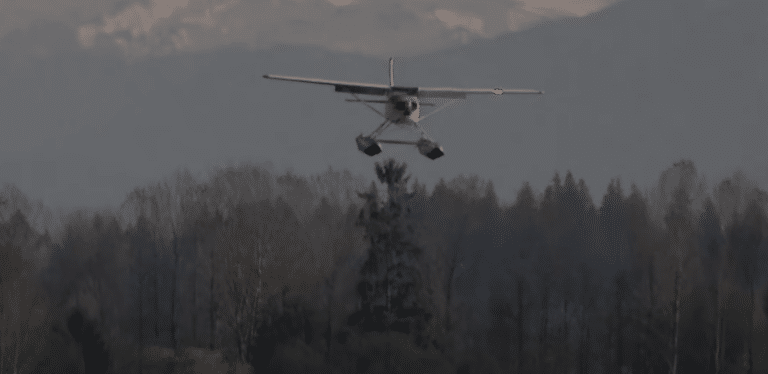CRFI | Learn what a CRFI is in Canada?
The CRFI, or Canadian Runway Friction Index is a scale from 0 to 1 indicating how slippery a runway is. Information is adapted from the Aeronautical Information Manual which is freely available online. This material is also used in our PPL and CPL Online Ground school courses.
Reduced Runway Coefficients of Friction and Aircraft Performance
The accelerate-stop distance, landing distance and crosswind limitations (if applicable) contained in the aircraft flight manual (AFM) are demonstrated in accordance with specified performance criteria on runways that are bare, dry, and that have high surface friction characteristics. Unless some factor has been applied, these distances are only valid under similar runway conditions. Whenever a contaminant—such as water, snow or ice—is introduced to the runway surface, the effective coefficient of friction between the aircraft tire and runway is substantially reduced.
The stop portion of the accelerate-stop distance will increase, the landing distance will increase and a crosswind may present directional control difficulties. The problem has been to identify, with some accuracy, the effect that the contaminant has had on reducing the runway coefficient of friction and to provide meaningful information to the pilot, e.g. how much more runway is needed to stop and what maximum crosswind can be accepted.
Description of CRFI Values
The decelerometer is an instrument mounted in a test vehicle that measures the decelerating forces acting on the vehicle when the brakes are applied. The instrument is graduated in increments from 0 to 1, the highest number being equivalent to the theoretical maximum decelerating capability of the vehicle on a dry surface. These numbers are referred to as the CRFI. It is evident that small numbers represent low braking coefficients of friction while numbers on the order of 0.8 and above indicate the braking coefficients to be expected on dry runways.
The brakes are applied on the test vehicle at 300-m (1 000-ft) intervals along the runway within a distance of 10 m (30 ft) from each side of the runway centreline at that distance from the centreline where the majority of aircraft operations take place at each given site. The readings taken are averaged and reported as the CRFI number.
Application of CRFI

This chart provides information for calculating headwind and crosswind components. The vertical lines indicate the recommended maximum crosswind component for reported CRFI.
Example: CYOW CRFI 07/25 -4C .30 1201191200 Tower Wind 110° 20 kt.
The wind is 40° off the runway heading and produces a headwind component of 15 kt and a crosswind component of 13 kt. The recommended minimum CRFI for a 13-kt crosswind component is .35.
A takeoff or landing with a CRFI of .3 could result in uncontrollable drifting and yawing. The CRFI depends on the surface type, as shown in Table 4a. It should be noted that:
- the CRFI values given in Table 4a are applicable to all temperatures. Extensive measurements have shown that there is no correlation between the CRFI and the surface temperature. The case where the surface temperature is just at the melting point (i.e. about 0°C) may be an exception, as a water film may form from surface melting, which could induce slippery conditions with CRFIs less than those in Table 4a.
- the CRFI may span a range of values for various reasons, such as variations in texture among surfaces within a given surface class. The expected maximum and minimum CRFIs for various surfaces are listed in Table 4b. Note that these values are based on a combination of analyses of extensive measurements and sound engineering judgment.
- the largest range in CRFI is to be expected for a thin layer (3 mm or less in thickness) of dry snow on pavement (Table 4a). This variation may occur due to: (i) non-uniform snow coverage; and/or (ii) the tires breaking through the thin layer. In either case, the surface presented to the aircraft may range from snow to pavement.
© Her Majesty the Queen in Right of Canada, represented by the Minister of
Transport (2021) This information has been reproduced with the permission of
Transport Canada.
Discover more from Canadian Flight Trainers
Subscribe to get the latest posts sent to your email.







